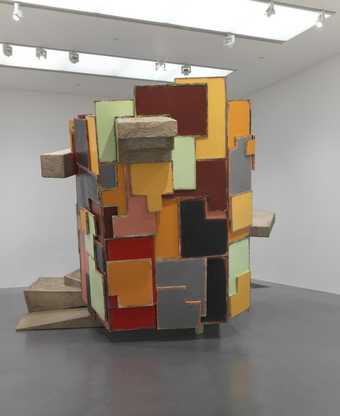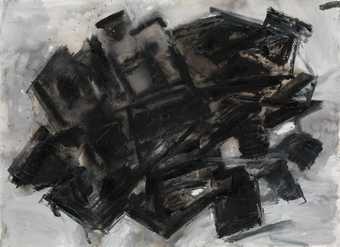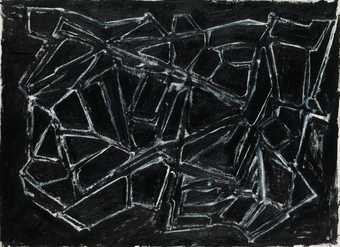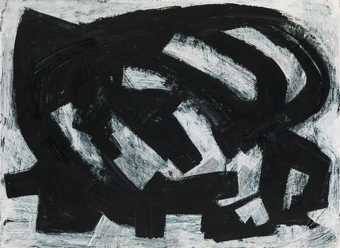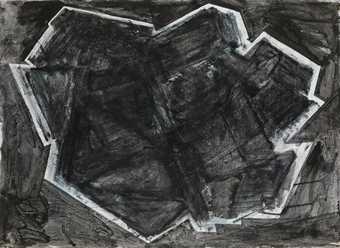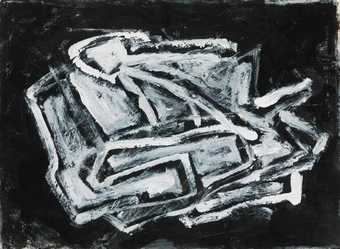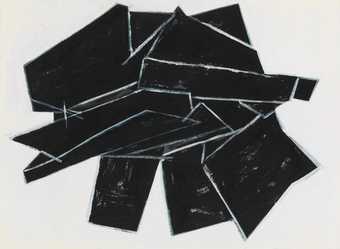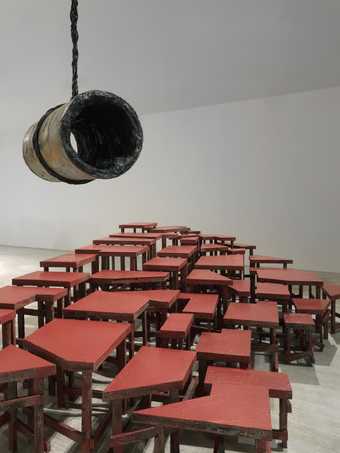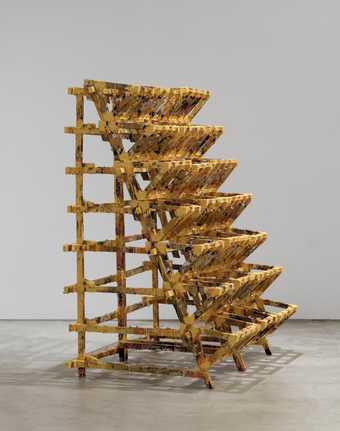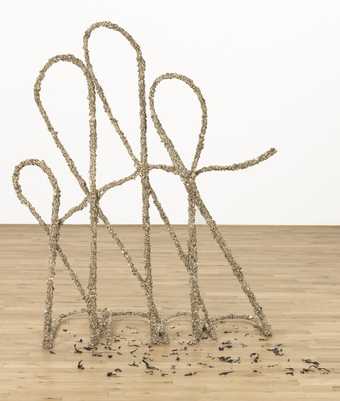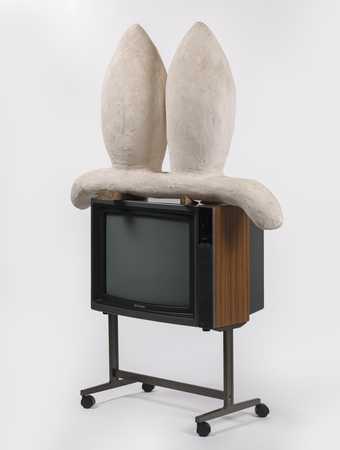
Not on display
- Artist
- Michael Dean born 1977
- Medium
- Concrete
- Dimensions
- Unconfirmed: 3260 × 1740 × 40 mm
- Collection
- Tate
- Acquisition
- Purchased 2017
- Reference
- T14840
Summary
education (working title) 2012 was made for the artist’s solo exhibition Government at the Henry Moore Institute, Leeds in 2012. It is constructed of eight large, single pieces of concrete, cast from the same mould so that when installed they fit together perfectly to give the impression of one solid piece of concrete. Each of the eight individual elements is angled in a different way so that the structure appears to flow and curve in a manner that is in opposition to the strength and weight of the material. education (working title) was the first work that the viewer encountered in the Henry Moore Institute exhibition. It was one of three similar works in the show, the other two being health (working title) and home (working title), their titles highlighting areas of governmental policy or control. In their scale and use of material, the works in the series echo the form of brutalist municipal buildings or places of government work, but also hint at the implacable, immovable nature of bureaucracy in the face of the individual. The titles of all of the works, including misspelling and inconsistent capitalisation are as intended by the artist.
Dean is interested in the potential of words and their associations to be expressed in material form. Early in his career, the main component of his work was his writing, manifested as short texts, self-published books, sentences and dialogues, alongside small linguistic configurations of found objects and photography. Subsequently, his sculptures have become larger, using materials that are instantly recognisable from everyday life – concrete, steel, anti-vandal paint and corrugated iron. Dean has produced a number of works by translating excerpts of his writing into a typeface of his own design, from which he then generates moulds and casts. The significant factor is not that the sculptures are decipherable as words, but rather that the viewer should be able to faintly discern language in their forms, with a word or an idea being just about imaginable (see, for example, ffff (working title) 2016 [Tate T14851] or shored (Working Title) 2016 [Tate T14850]). As such, the sculptures become instigators of individual engagement, as well as spaces through which to explore subjectivity in language and in art. Their human scale and at times oddly anthropomorphic aspect sets up a relationship with the body of the reader/viewer, and their own physicality in the exhibition space. Displayed in related groups and read in this way, Dean’s sculptures highlight the mediating position of language between an author/artist and the reader/viewer.
The industrial nature of Dean’s materials, combined with their anthropomorphic nature and scale, gives his objects the appearance of having been lifted from a building site, a docklands or an industrial estate. His work displays a heightened sensitivity to the physical properties of the materials used, playing with steel’s propensity to rust, the malleability and familiarity of corrugated sheet metal and, significantly, the porosity of concrete – a material that, even when set, can be stained by its environment, absorbing leaks and drips and the traces of human touch – endowing Dean’s work with an organic appearance that looks simultaneously manmade and naturally formed.
Further reading
Paul Teasdale, ‘Michael Dean: In Focus’, Frieze, no.143, November–December 2011, https://frieze.com/article/focus-michael-dean, accessed 1 November 2016.
Michael Dean, Lisa Le Feuvre, Pavel S. Pys, Michael Dean: Selected Writings, Milan 2012.
Laura Smith and Linsey Young, ‘Michael Dean’, in Turner Prize 2016, exhibition catalogue, Tate Britain, London 2016.
Linsey Young and Laura Smith
November 2016
Does this text contain inaccurate information or language that you feel we should improve or change? We would like to hear from you.
You might like
-
Dame Phyllida Barlow DBE RA untitled: awnings, 2012
2012 -
Dame Phyllida Barlow DBE RA untitled: upturnedhouse2, 2012
2012 -
Dame Phyllida Barlow DBE RA untitled: torque, 2015
2015 -
Dame Phyllida Barlow DBE RA untitled: black 1, 2014
2014 -
Dame Phyllida Barlow DBE RA untitled: black 3, 2014
2014 -
Dame Phyllida Barlow DBE RA untitled: black 4, 2014
2014 -
Dame Phyllida Barlow DBE RA untitled: black 6, 2015
2015 -
Dame Phyllida Barlow DBE RA untitled: black 8, 2015
2015 -
Dame Phyllida Barlow DBE RA untitled: black 10, 2015
2015 -
Dame Phyllida Barlow DBE RA untitled: black 11, 2014
2014 -
Dame Phyllida Barlow DBE RA untitled: brokenstage/hangingcontainer, 2012/2013
2012–3 -
Dame Phyllida Barlow DBE RA Untitled (Yellow Rack)
2006 -
Michael Dean shored (working title)
2016 -
Michael Dean ffff (working title)
2016 -
Dame Phyllida Barlow DBE RA Object for the television
1994


